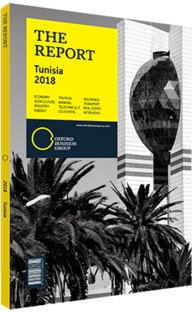Stability required to rejuvenate Tunisia's phosphate industry
A historically important contributor to the economy, phosphate mining continues to show mixed signs following years of underperformance. Seven years after Tunisia’s revolution, phosphate mining and the operations of state-owned Compagnie des Phosphates de Gafsa (CPG) remain marred by the loss of the country’s position in international markets. Instability during that time led to a sharp reduction in production and export volumes, denting the industry’s economic contribution in terms of foreign currency earnings. An erratic trend persists, comprising production increases followed by stoppages due to protests by unemployed youth in the mining areas of the south.
Despite a pick up in production in early 2017, annual phosphate output remains well below the 2010 level of 8m tonnes. According to the CPG, phosphate production declined by 40-50% between 2010 and 2017.
Output Snapshot
Some periods have indicated the industry’s potential to return to its former economic weight. For example, in the first three months of 2017 phosphate production rose by 46% over the same quarter of 2016, hitting 1.33m tonnes, according to the Ministry of Energy, Mining and Renewable Energies. This expansion saw the industry post its highest levels of monthly production since 2010. Increased output at the beginning of 2017 led authorities to project production of 6.5m tonnes by the end of the year – twice that extracted in 2016. However, the remainder of the year showcased how vulnerable the phosphate industry remains. Total 2017 output came in at a historic low of 3.5m tonnes, and suppressed production continued into January 2018. Output that month was just 160,000 tonnes, versus 500,000 in January 2017.
To a large extent, Tunisia’s phosphate output is funnelled to processing plants and fertiliser production centres. The country’s two largest phosphate producers are state-owned Groupe Chimique Tunisien (GCT) and Tunisian Indian Fertilisers, which produces phosphoric acid under a joint-venture agreement between Tunisian public companies GCT and CPG, and Indian firms Gujarat State Fertilisers and Chemicals, and Coromandel International.
Securing Production
Following the 2011 revolt that displaced president Zine El Abidine Ben Ali, social tensions in the southern region of Gafsa – where phosphate output is centred – led to several interruptions of production. Strikes and blockades were linked to demands for better pay and more employment opportunities, events that continued in 2017 and early 2018.
The inability to maintain steady output has led to the loss of major international customers for Tunisian phosphate and derivative products, namely Brazil and India. According to Reuters, phosphate industry stakeholders are seeking to make up for lost international market share by increasing exports to Europe. The government estimates that strikes and production disruptions in the mining areas have led to losses of roughly $2bn in the years since 2011.
Although officials have been able to negotiate agreements to scale back protests in several industrial segments, recent measures have demonstrated the government’s aim to avoid any disruptions to critical industries. In May 2017 Tunisian authorities ordered the army to protect oil, gas and phosphate sites in the country’s south. The move prompted opposition from labour representatives and other quarters of Tunisian society, who characterised the move as excessive.
The decision to mobilise soldiers to ensure that these resource-based industries can continue operations also underlines the tenuous economic position the country has faced in recent years. A strong and unimpeded performance of activities such as phosphate production can easily determine the health of public finances and stability of the budget. In this sense, phosphate remains an indispensable source of export revenue for Tunisia. However, for the industry to return to its former size, stakeholders must ensure continuity and promote branding to new markets.
You have reached the limit of premium articles you can view for free.
Choose from the options below to purchase print or digital editions of our Reports. You can also purchase a website subscription giving you unlimited access to all of our Reports online for 12 months.
If you have already purchased this Report or have a website subscription, please login to continue.

